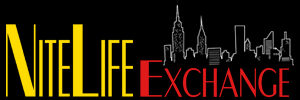
By Marilyn Lester****Reed-meisters Peter and Will Anderson‘s second installment of their annual Songbook Summit directed the spotlight on the life and music of the trumpeter/vocalist/composer Louis Armstrong—a pioneer of jazz, who, like Duke Ellington (showcased in part one of the Summit), built a foundation upon which generations of musicians still stand. As per their format, the Andersons supplied a goodly amount of historical narration and well-curated video to supplement the live performance. The sum total of their output was an easy flow of delights that, like its subject, couldn’t help but spread the love. Armstrong, had many nicknames, variously known as Little Louie, Dippermouth, Dipper, Satchelmounth, Satchmo, Satch, Ambassador Satch and most affectionately, Pops. He was as beloved for his wide smile and shining personality as he was for his musicality. It was a joy to be immersed in all of it for a spirited 90 minutes.
The Anderson’s opener, the vigorous “Muskrat Ramble,” a 1926 number, demonstrated Armstrong’s composing and playing style—a swinging New Orleans sound, elevated several notches above standard Dixieland, with often complex harmonic and rhythmic innovations. The band—a group of players from the A-list of the jazz world—was also curated, and well-matched to the demands of the music. In addition to Rossano Sportiello on piano and Paul Wells on drums, the rhythm section was rounded out by bandleader Vince Giordano on tuba (the tuba was the original time-keeper in early bands, yielding to the string bass, which was far more suited to the innovative jazz style). Trumpeter Mike Davis was present as a guest performer, stepping in at the last moment when Jon-Erik Kellso, who was scheduled to appear, was delayed coming in from Europe.
Giordano’s tuba solo on “St. James Infirmary Blues” (a tune of uncertain origin, but made famous by Armstrong in 1928) was an innovative arrangement for what was possibly derived from an old folk song. The original Armstrong recording of the number featured piano, drums, trombone, sax, clarinet, banjo and Louis on trumpet and vocals. Switching to an upright bass, Giordano offered several distinctive vocals (wisely with no attempt to emulate the singular Armstrong). He easily delivered the Andy Razaf/Fats Waller standard, a zippy “Ain’t Misbehavin'” and the amusing 1929 Sam Theard number, “I’ll Be Glad When You’re Dead.” This latter tune featured an elegant drum solo by Wells. Late in his career, Armstrong scored a megahit with Jerry Herman’s “Hello Dolly,” also sung in the straight-ahead Giordano style. Instrumentally, the ever versatile, Giordano switched to the bass saxophone on “Cornet Chop Suey,” Armstrong’s 1926 classic that jazz scholars count among his greatest work for its forward-thinking innovation.
The Andersons, of course, anchored the entire set with their versatile playing, mixing and matching their reeds in any given number. Peter Anderson took a solo on soprano sax in a duet with Sportiello on Armstrong’s late career hit, “What a Wonderful World” (George Weiss/Bob Thiele). Anderson’s tone was smooth and smokey on the lower registers, maintaining clarity of tone with flights on higher notes. Sportiello played so lightly and quietly as to effect the mood of a lullaby. Davis powered through Armstrong’s 1927 “Struttin’ with Some Barbecue,” also with a sure, clear tone. With slower tempo numbers, such as the 12-bar blues by Joe King Oliver, “West End Blues” and “When It’s Sleepy Time Down South” (Clarence Muse, Leon René and Otis René), Davis proved a sound player with deft fingering on the valves.
With the exception of Armstrong’s two 1960s pop-style hits, the program concentrated on the maestro’s work from the late 1920s touching into the 1930s. The finale was no exception, with the full complement playing out on a foot-tapping 1936 Armstrong gem, “Swing That Music.”









Leave a Reply